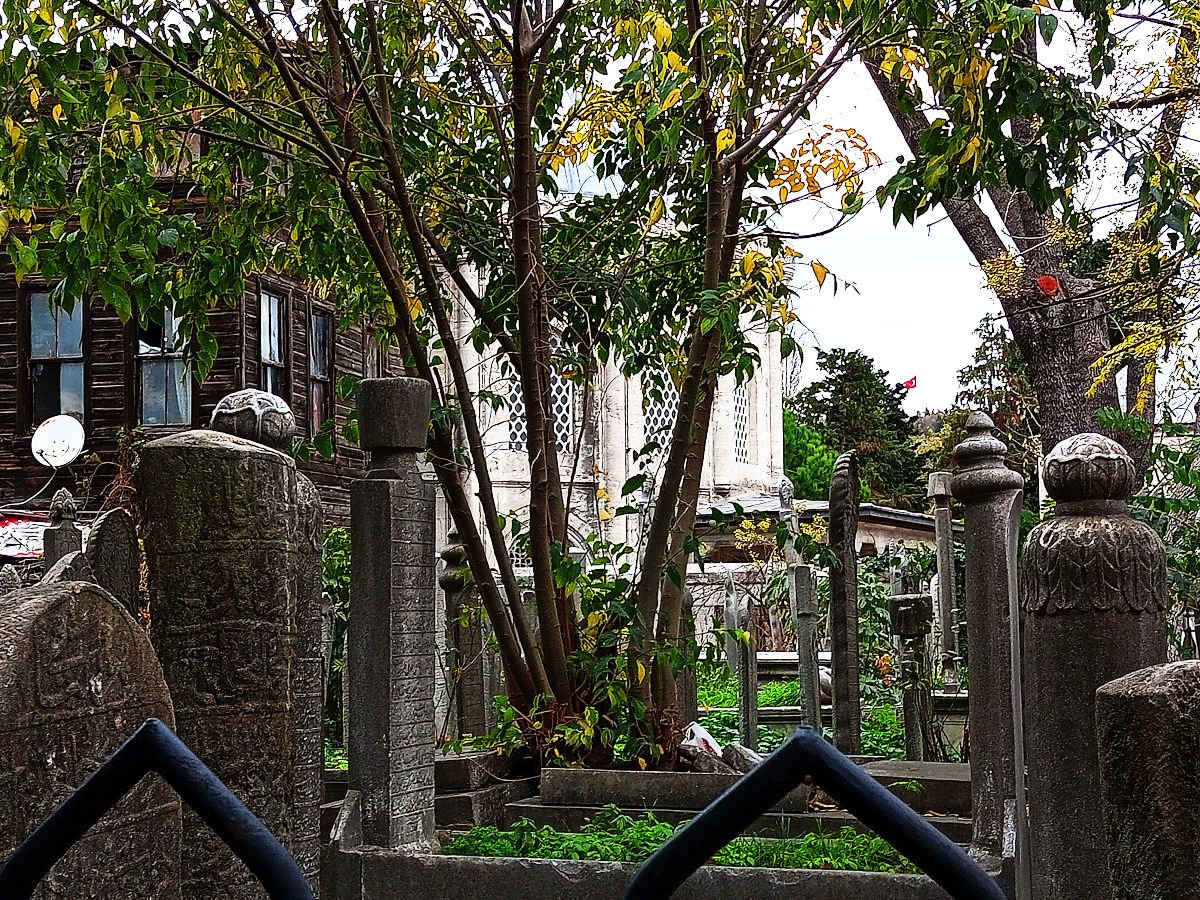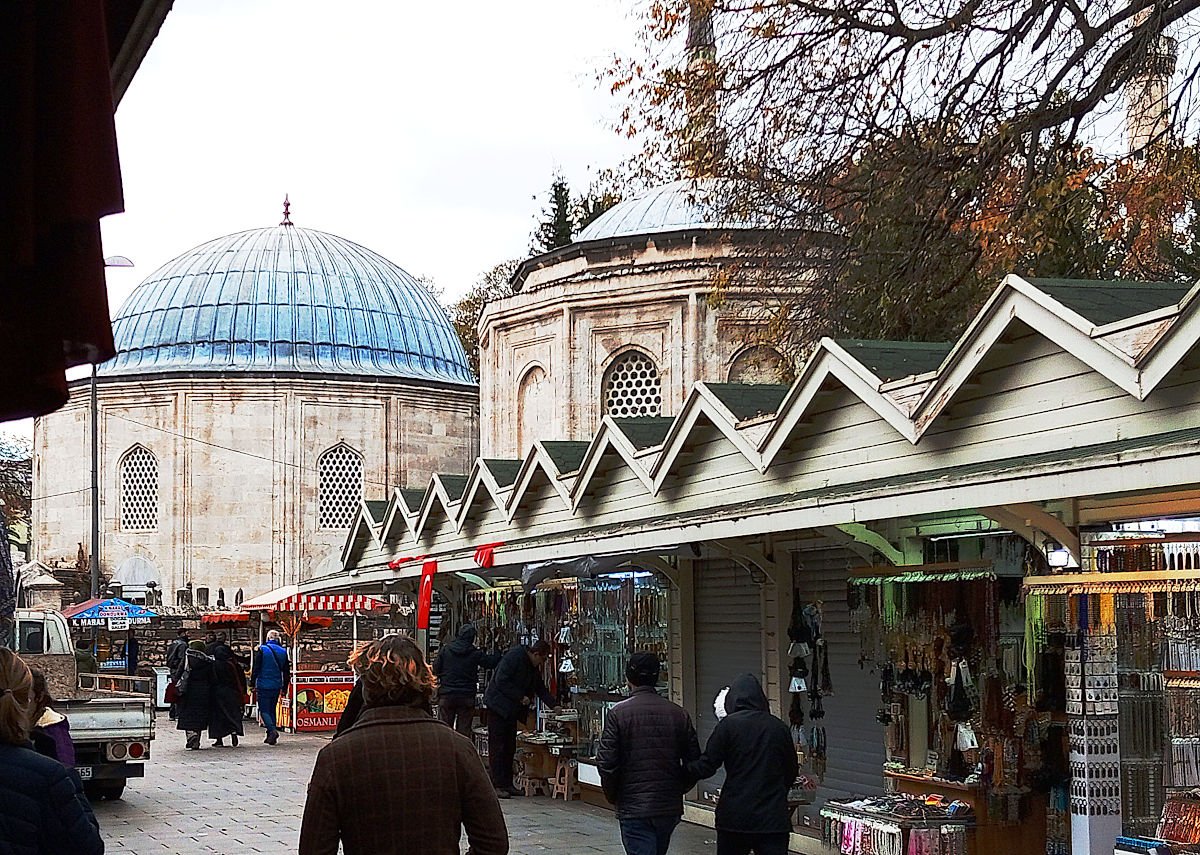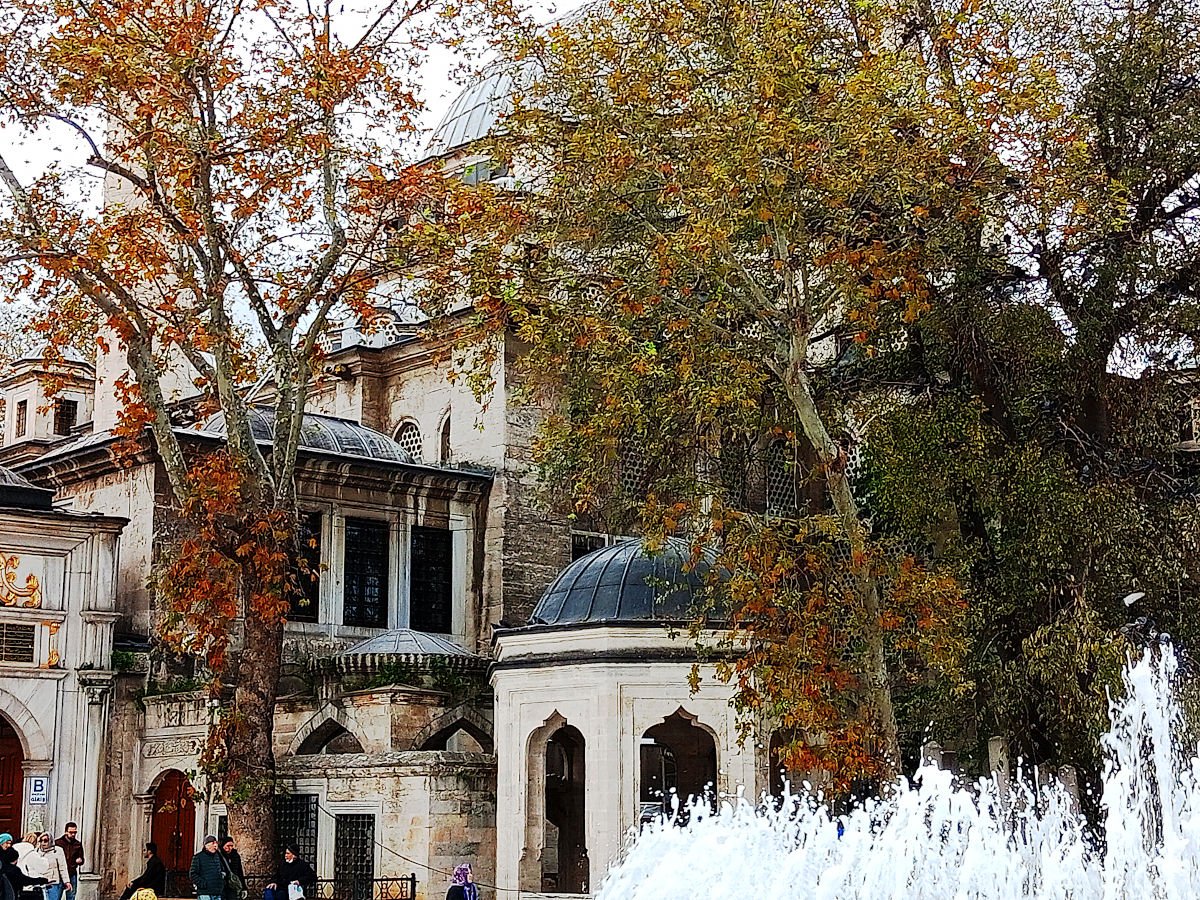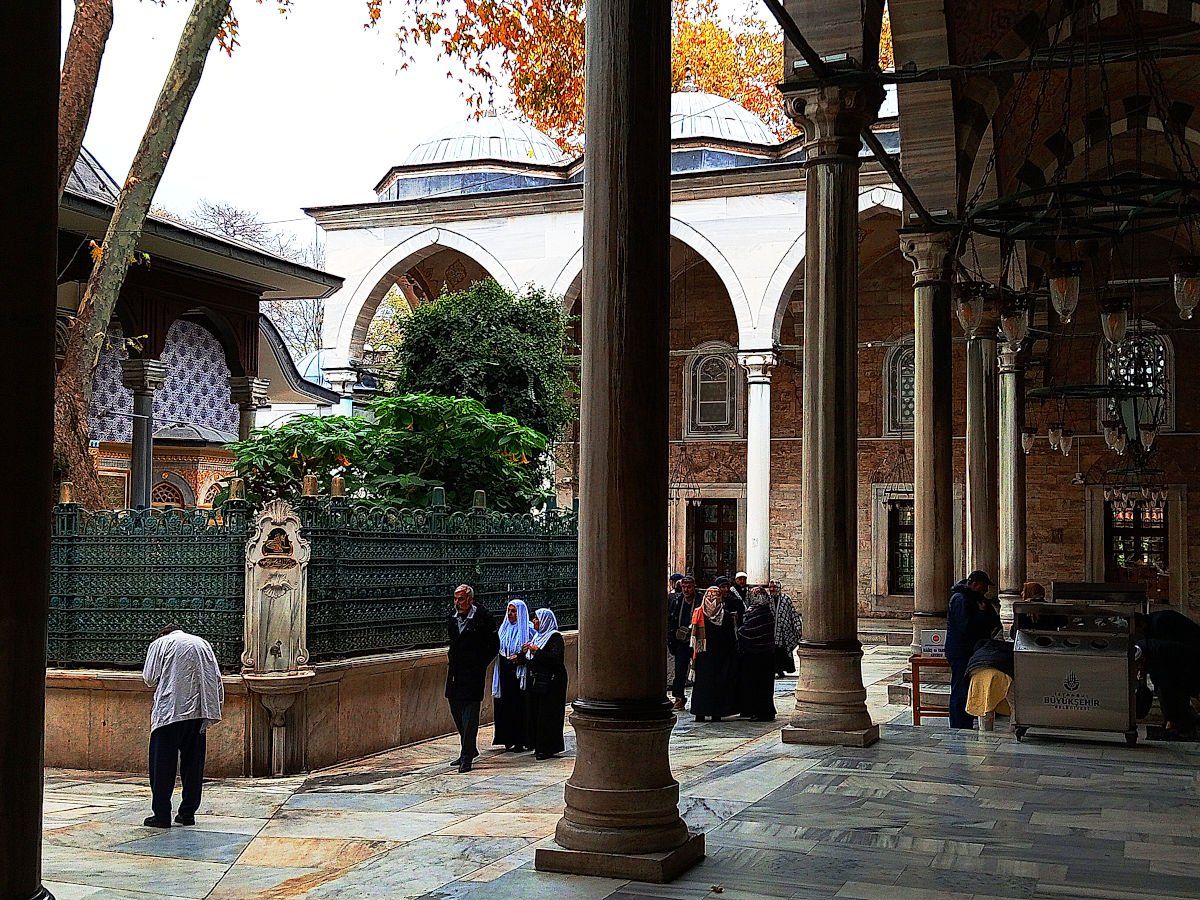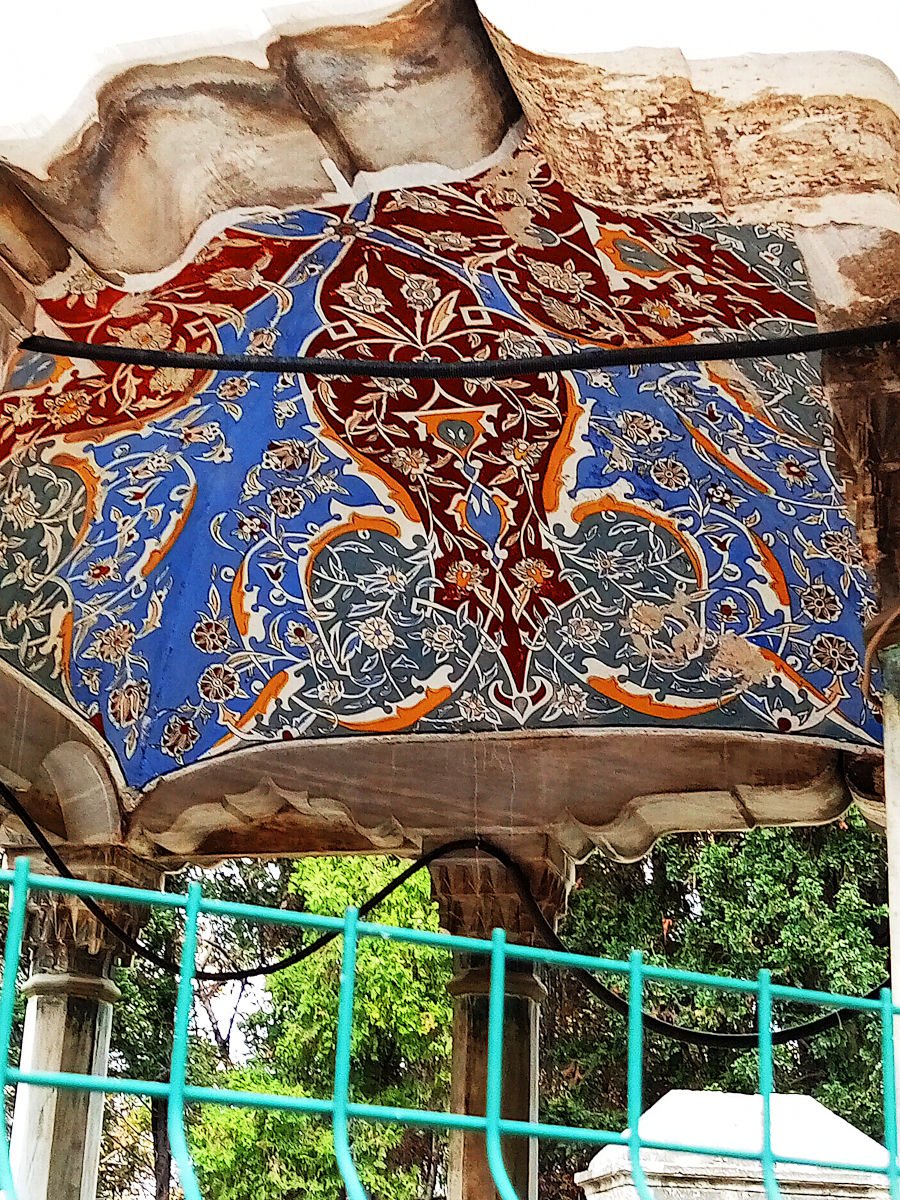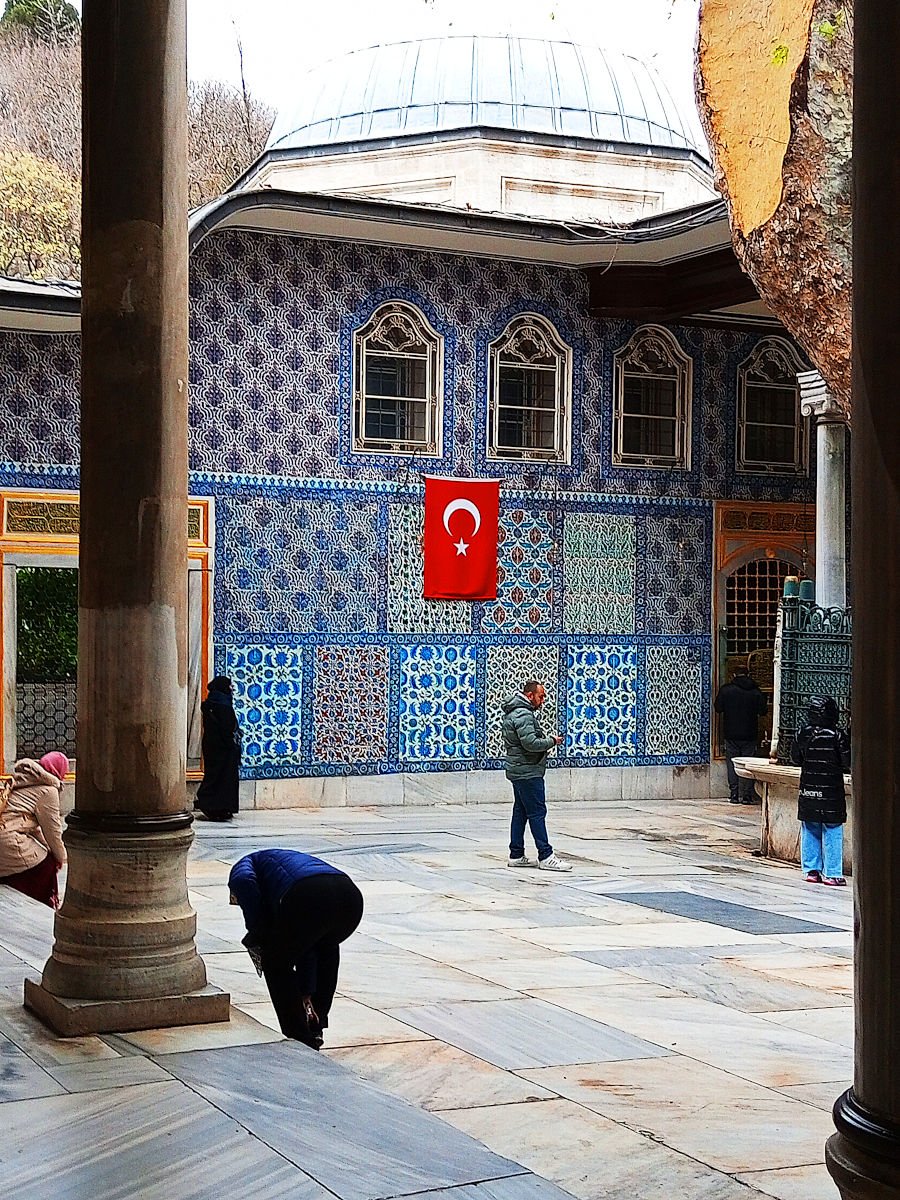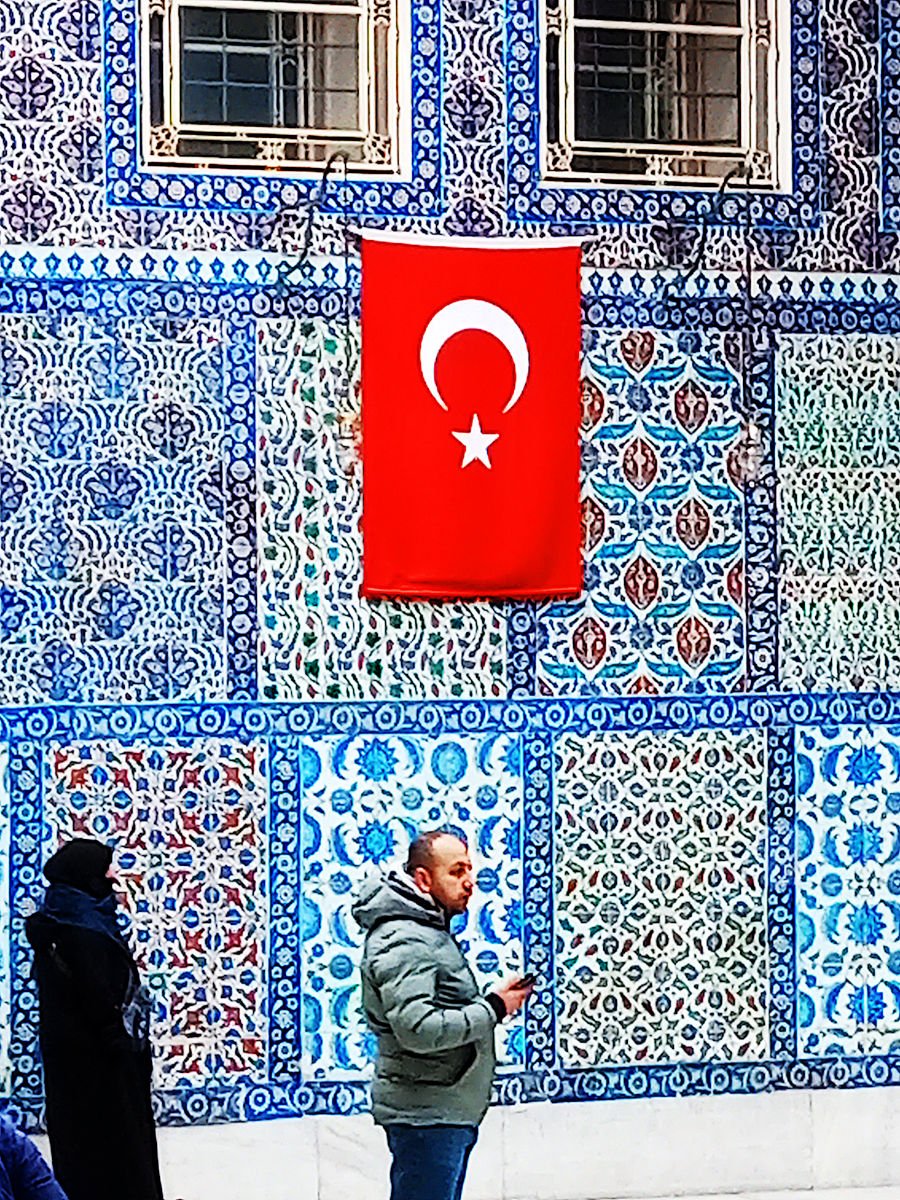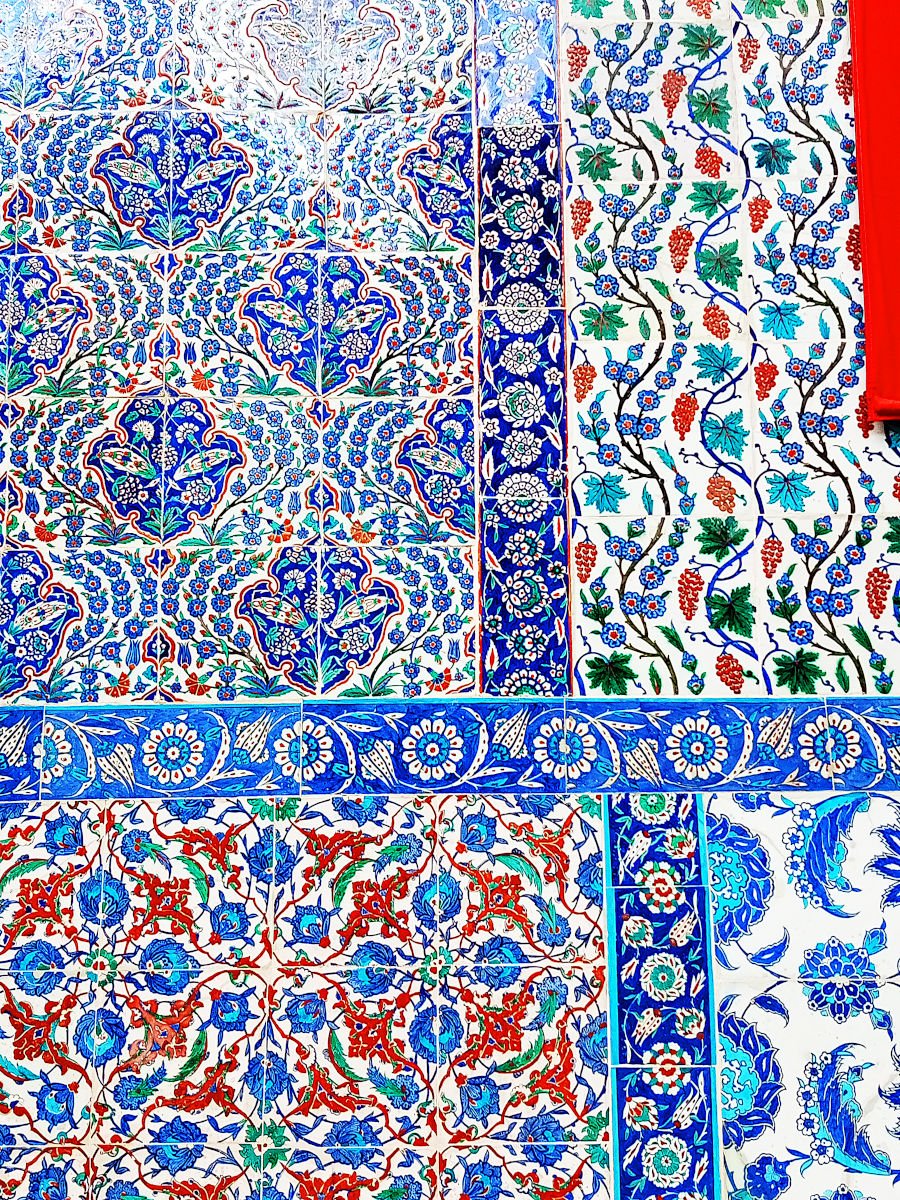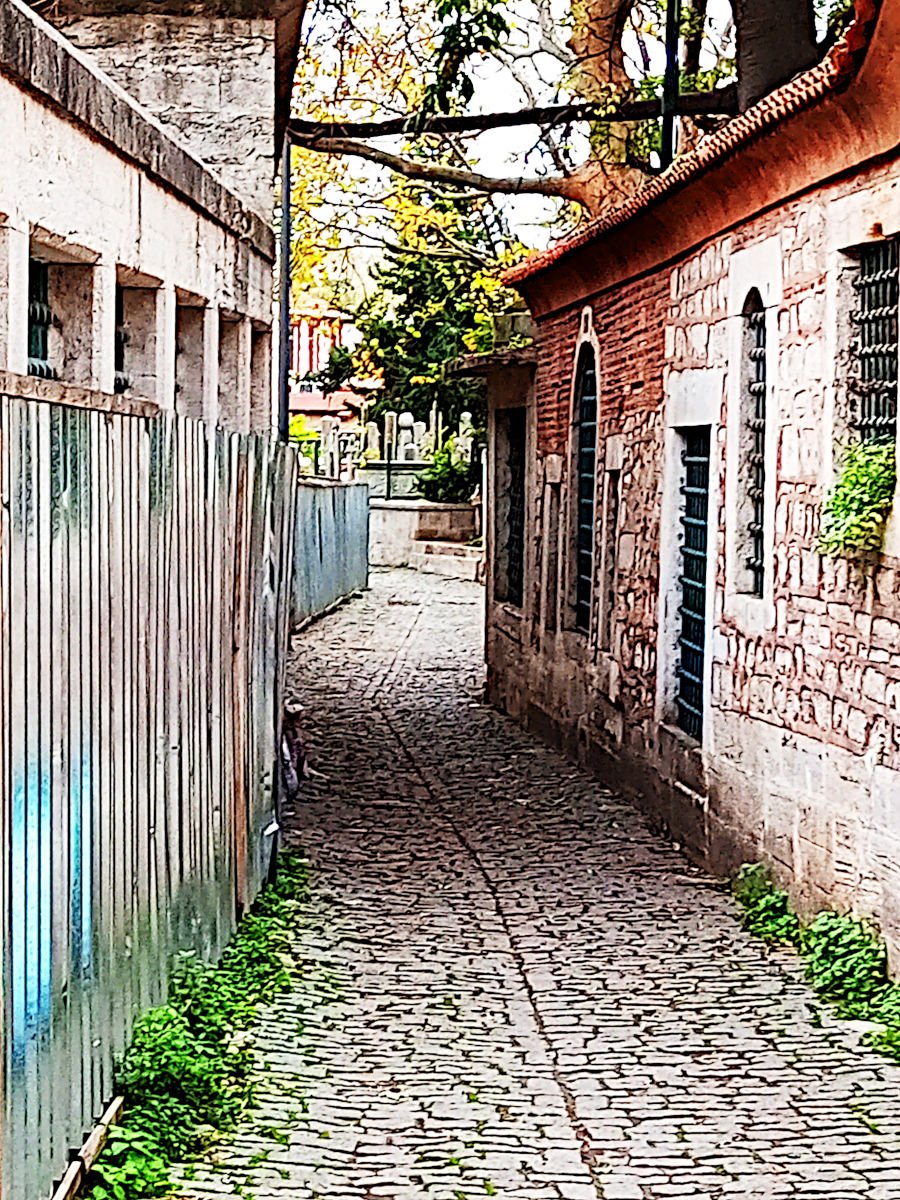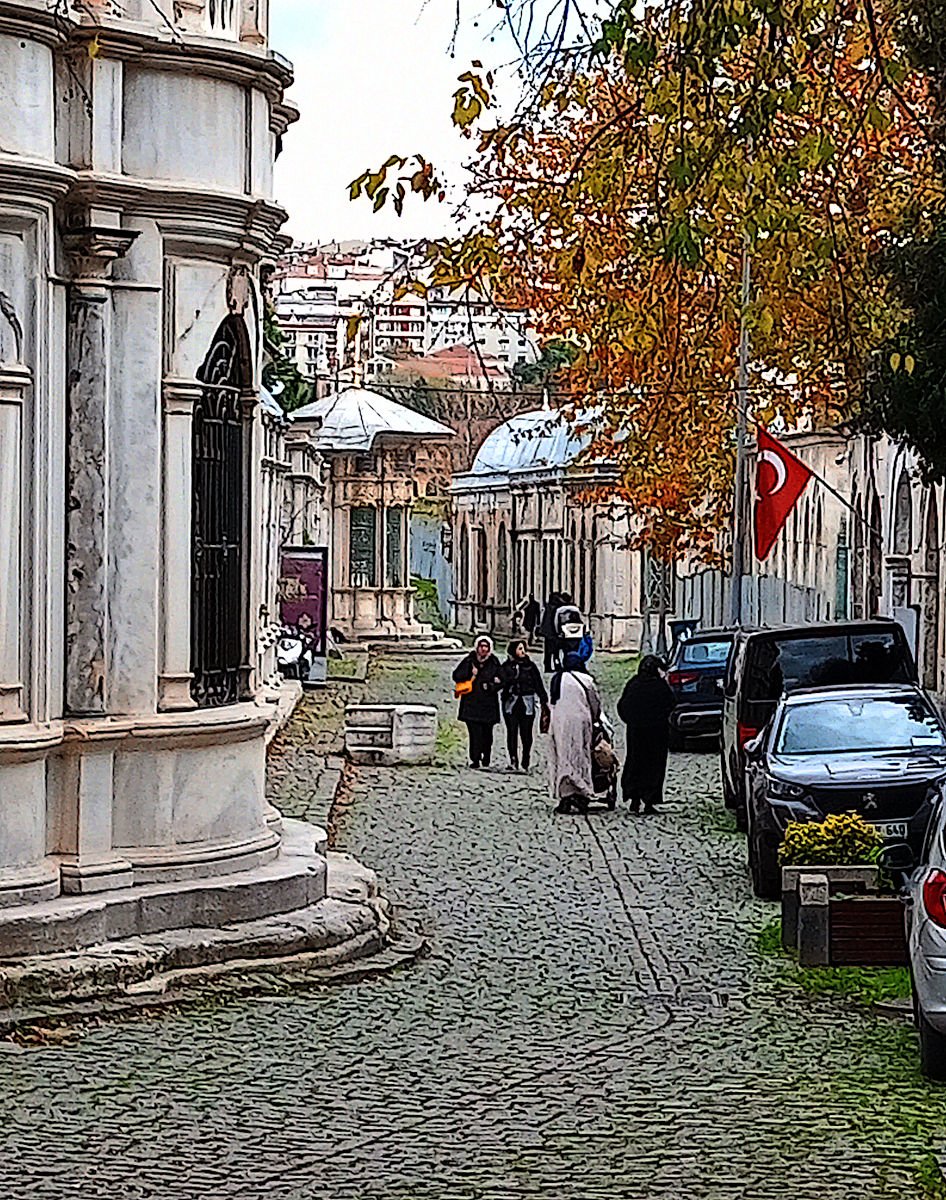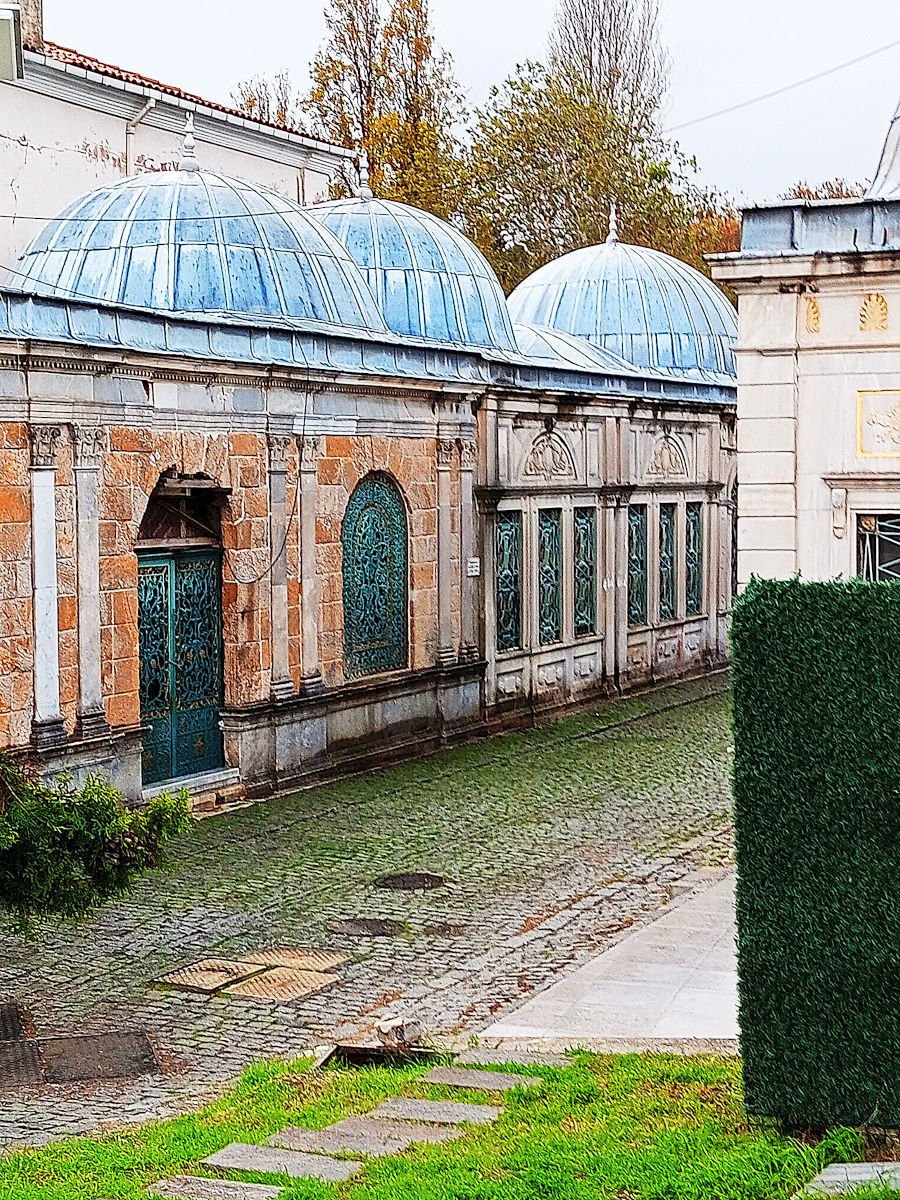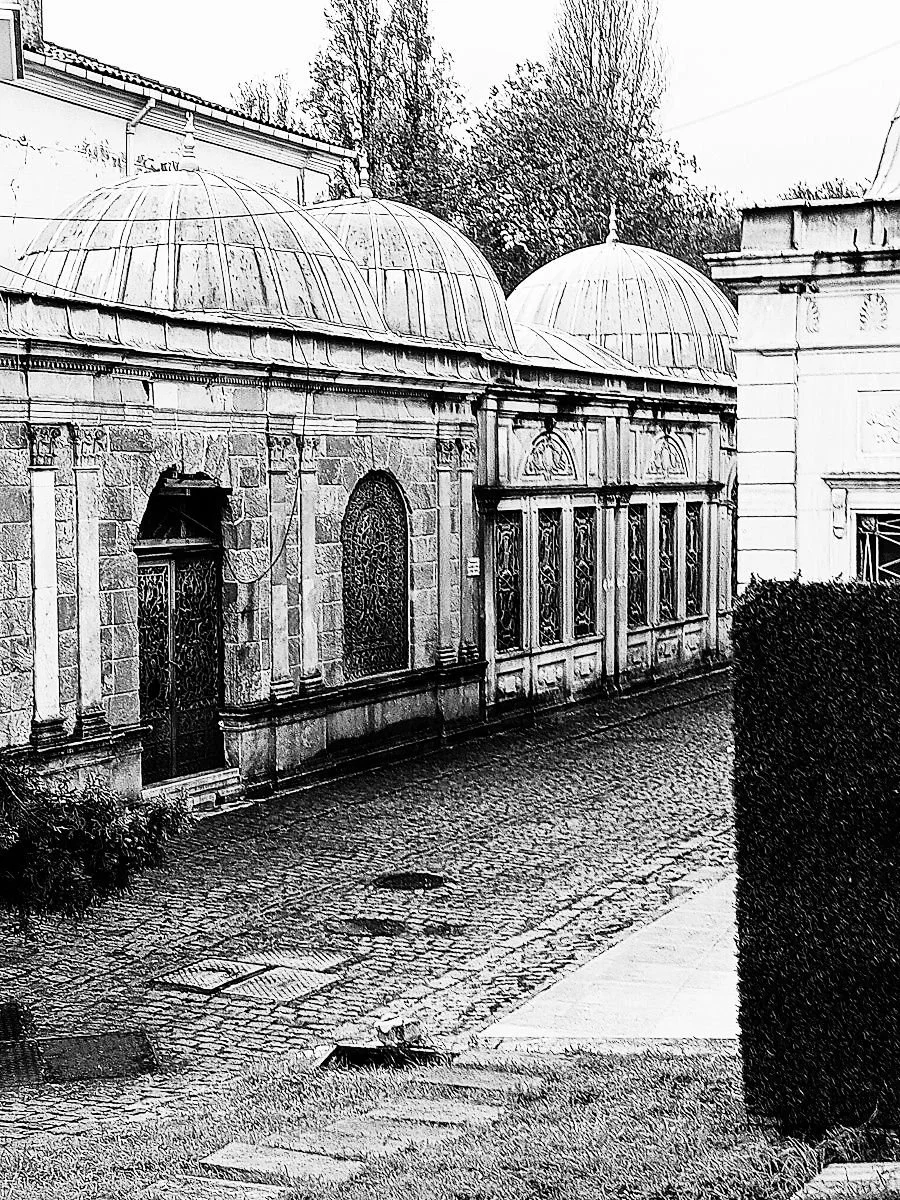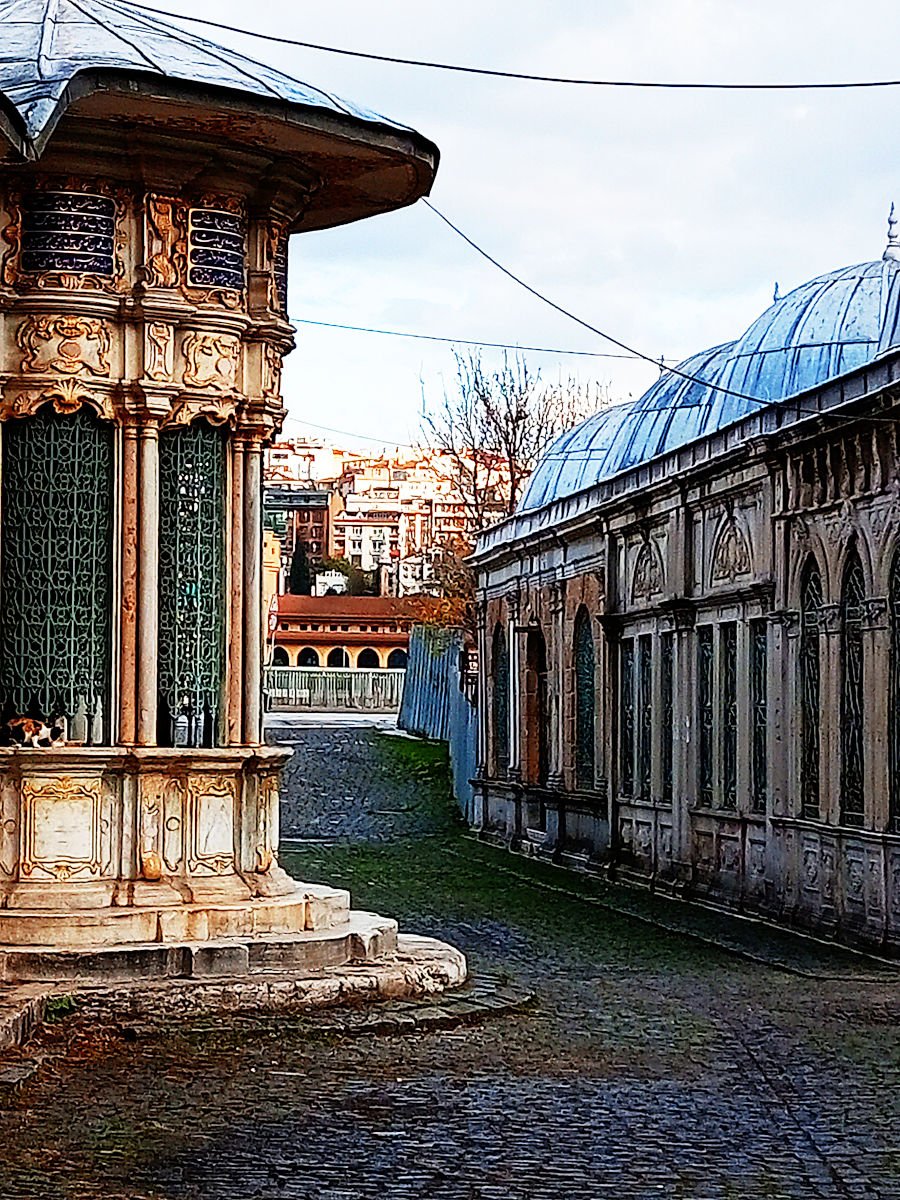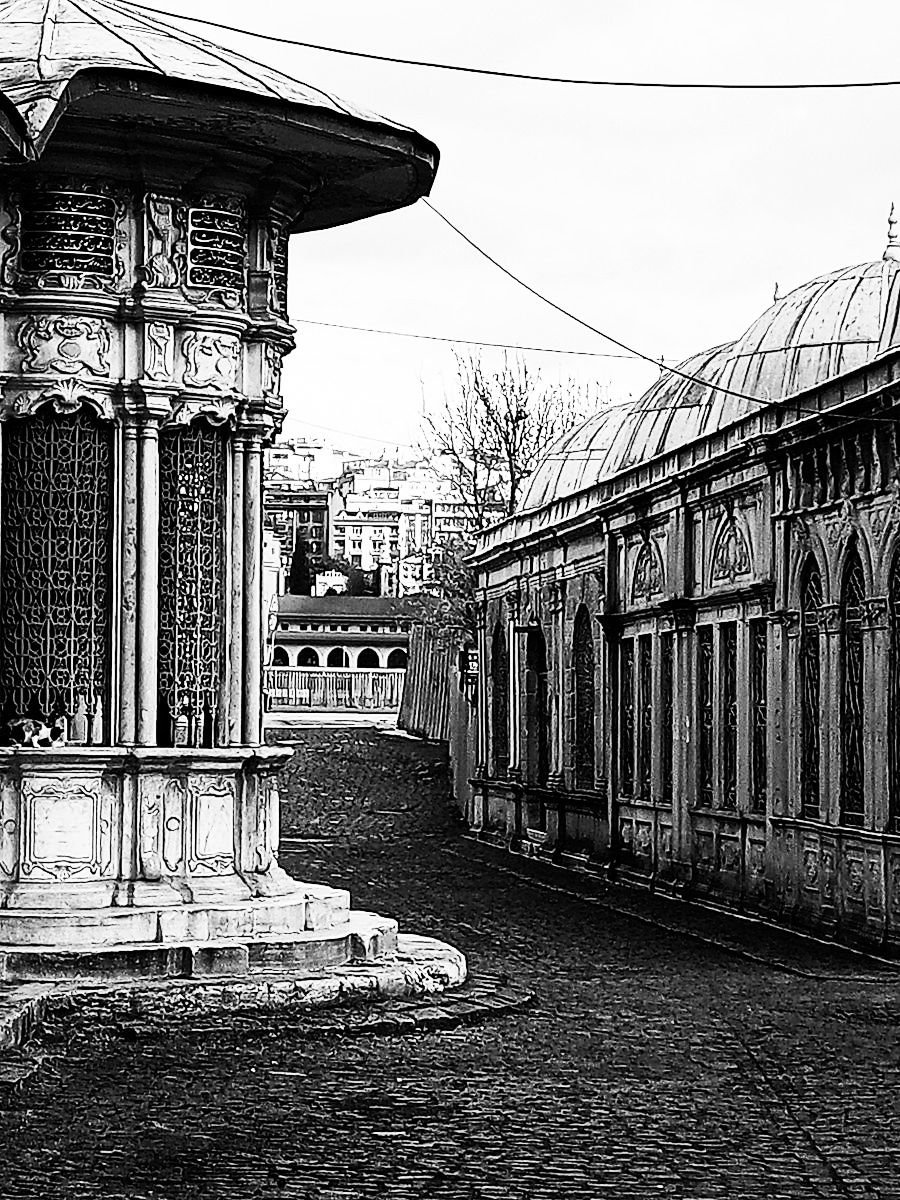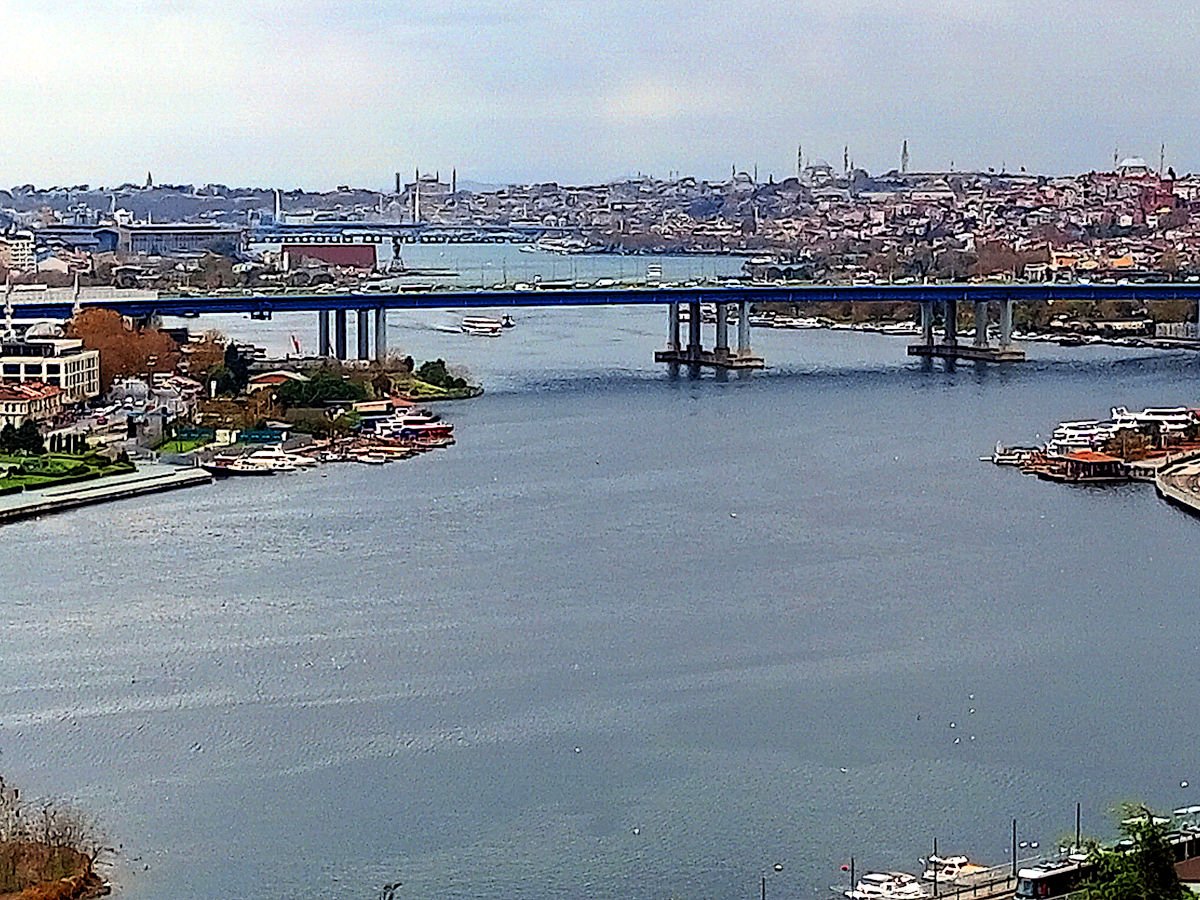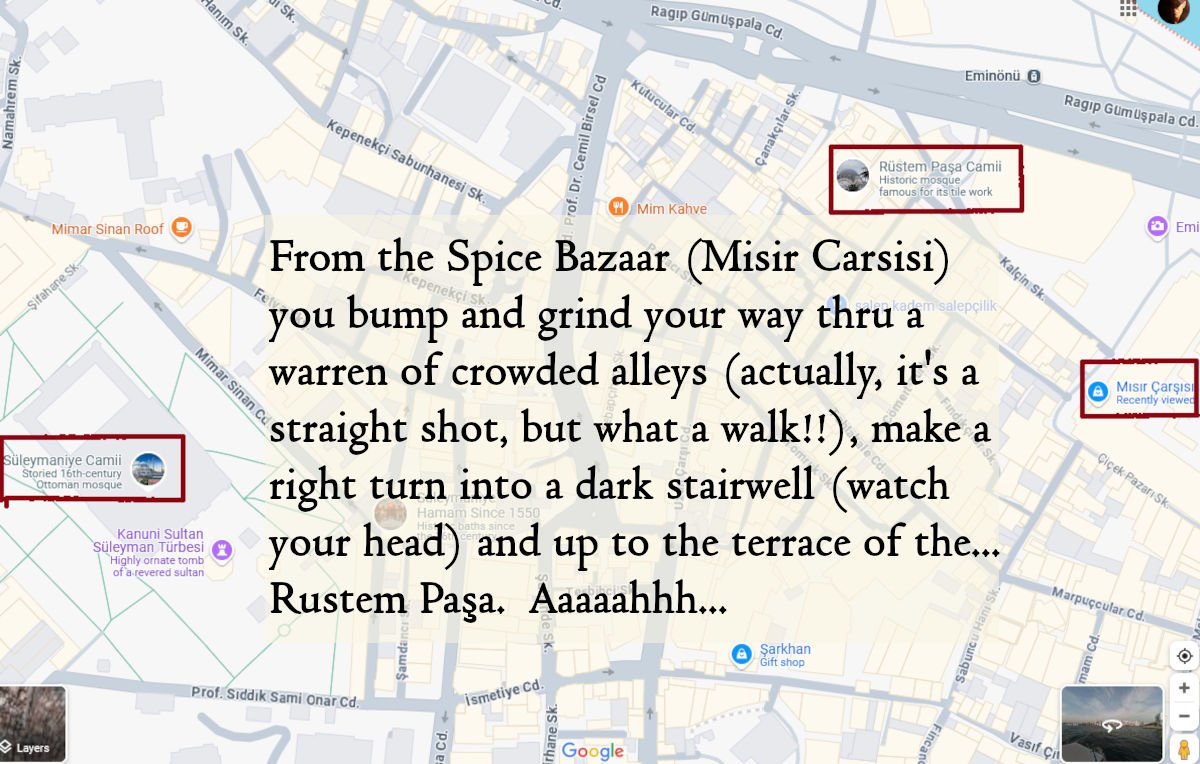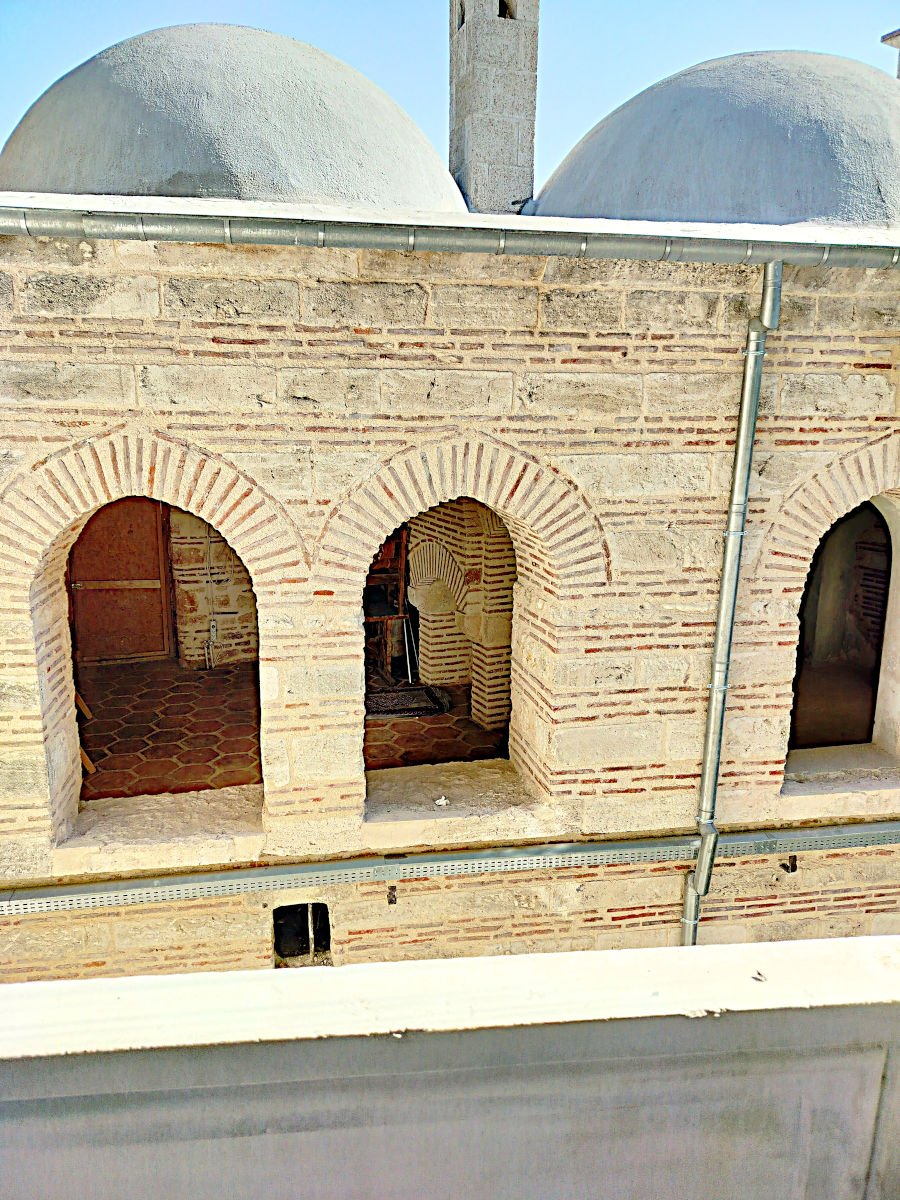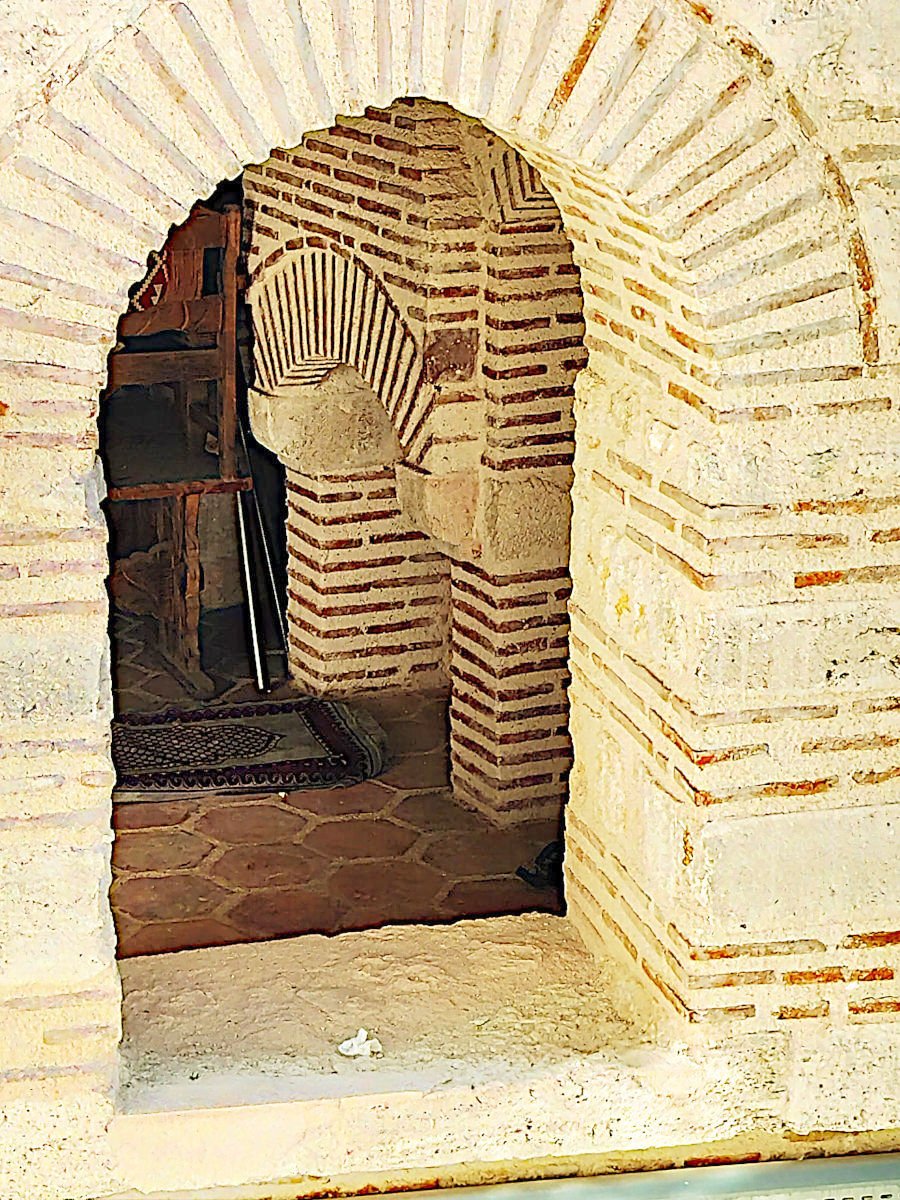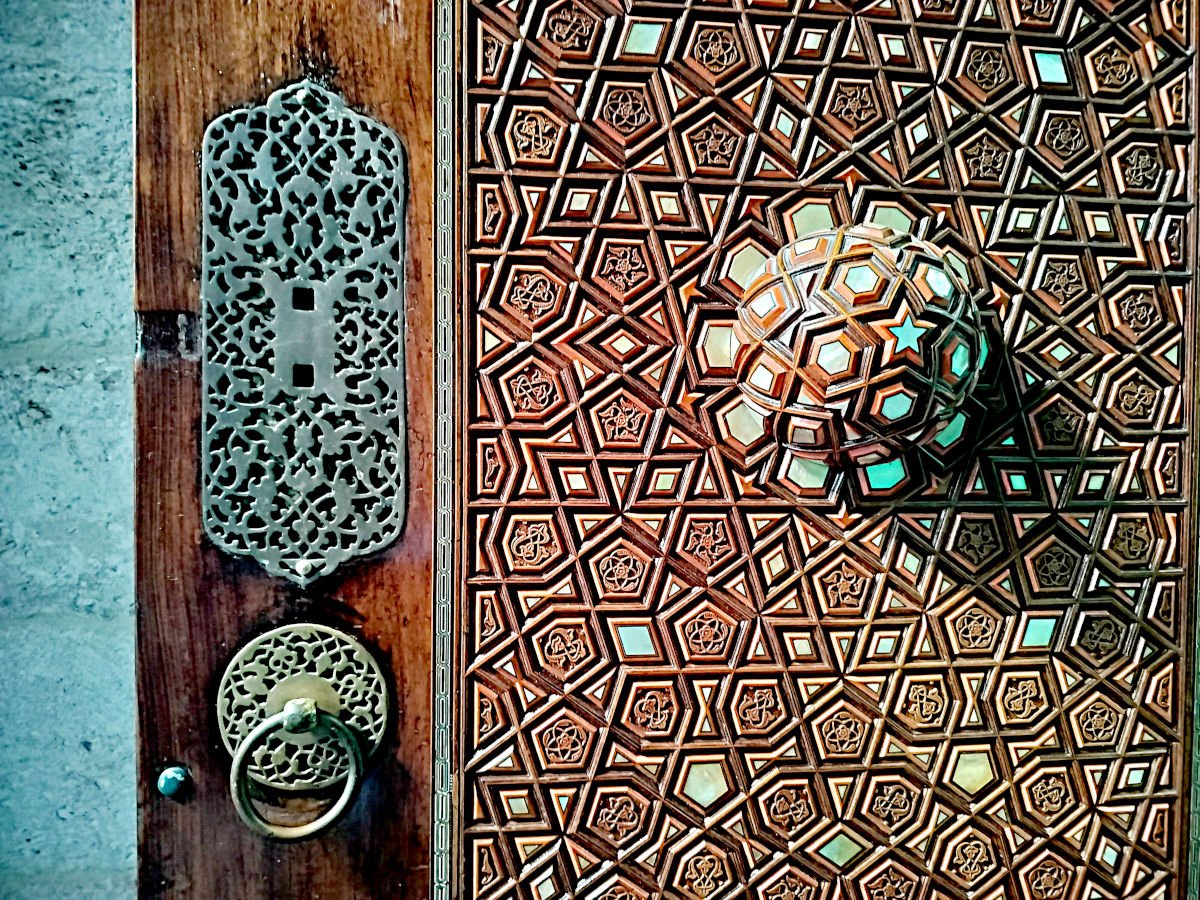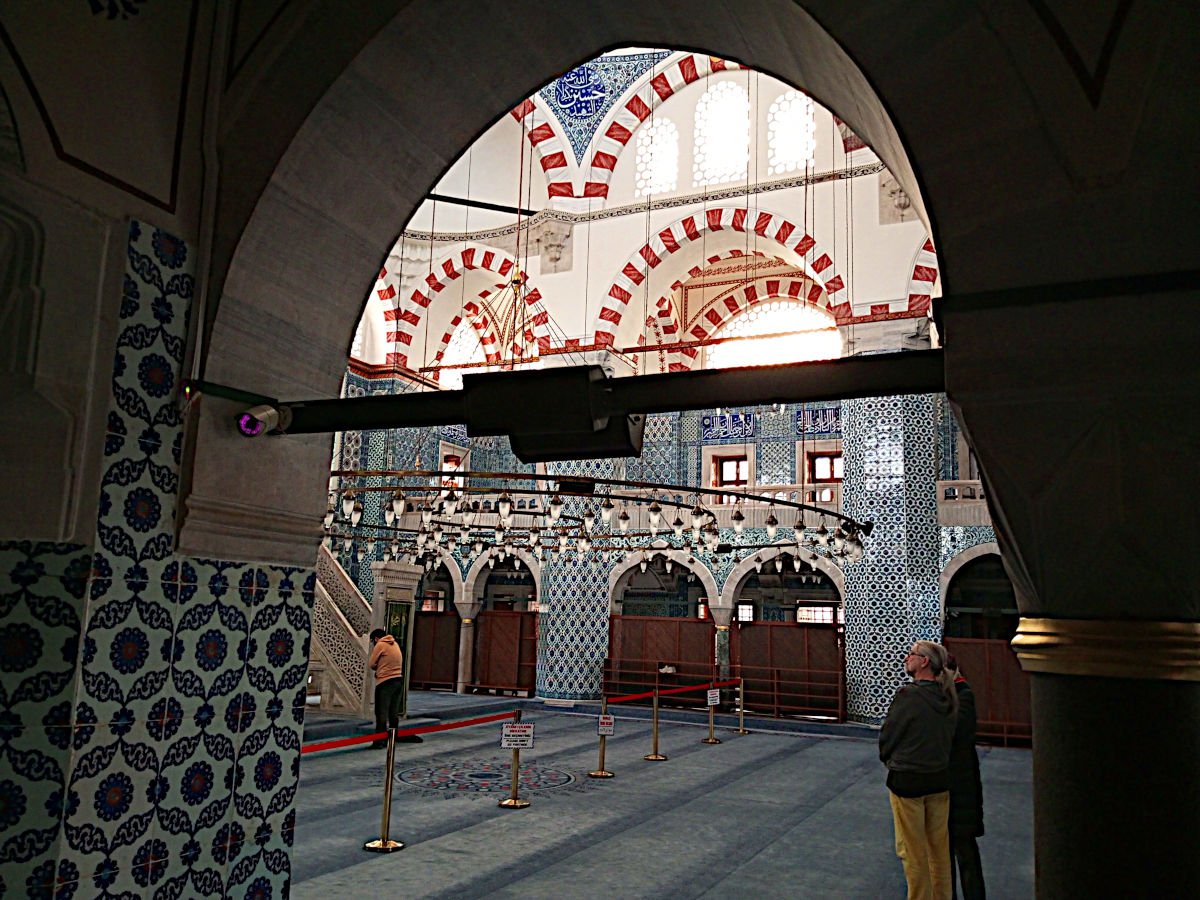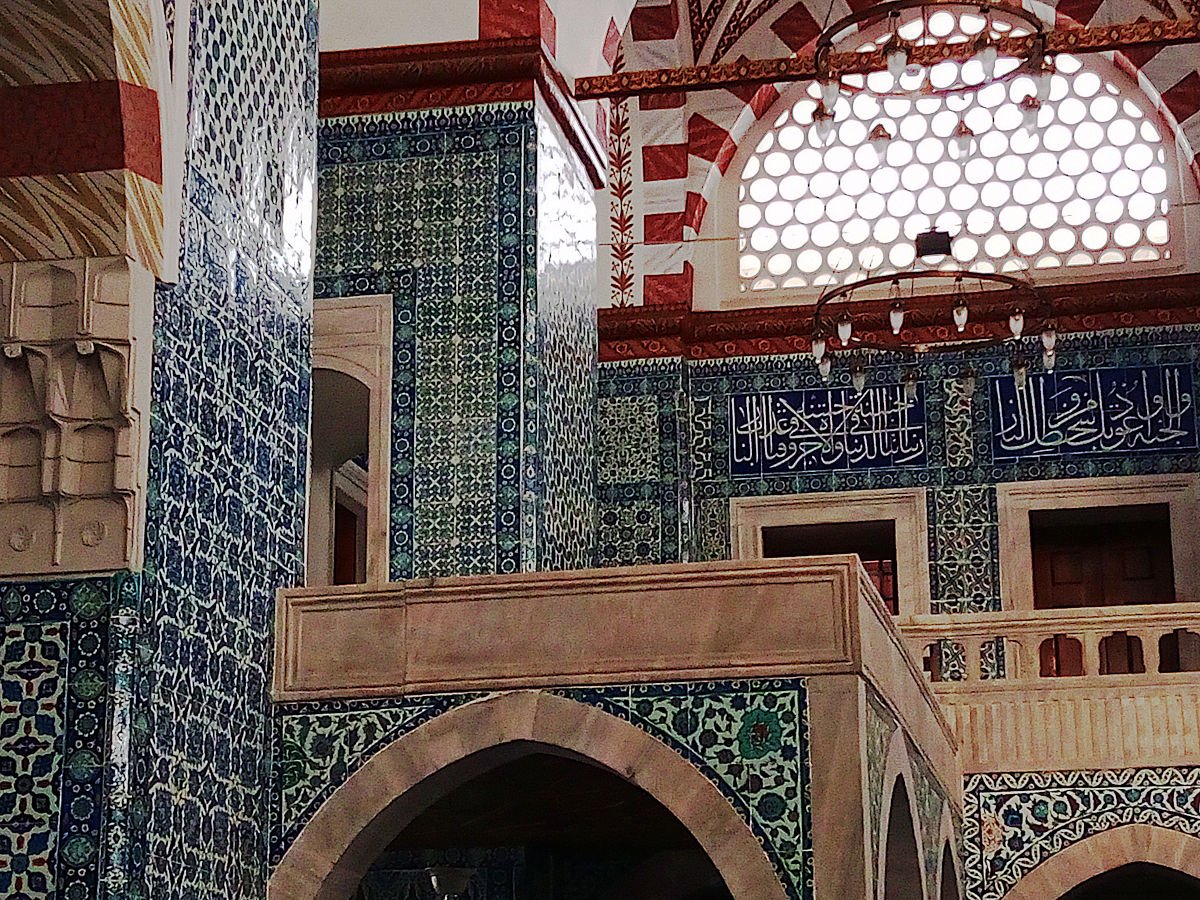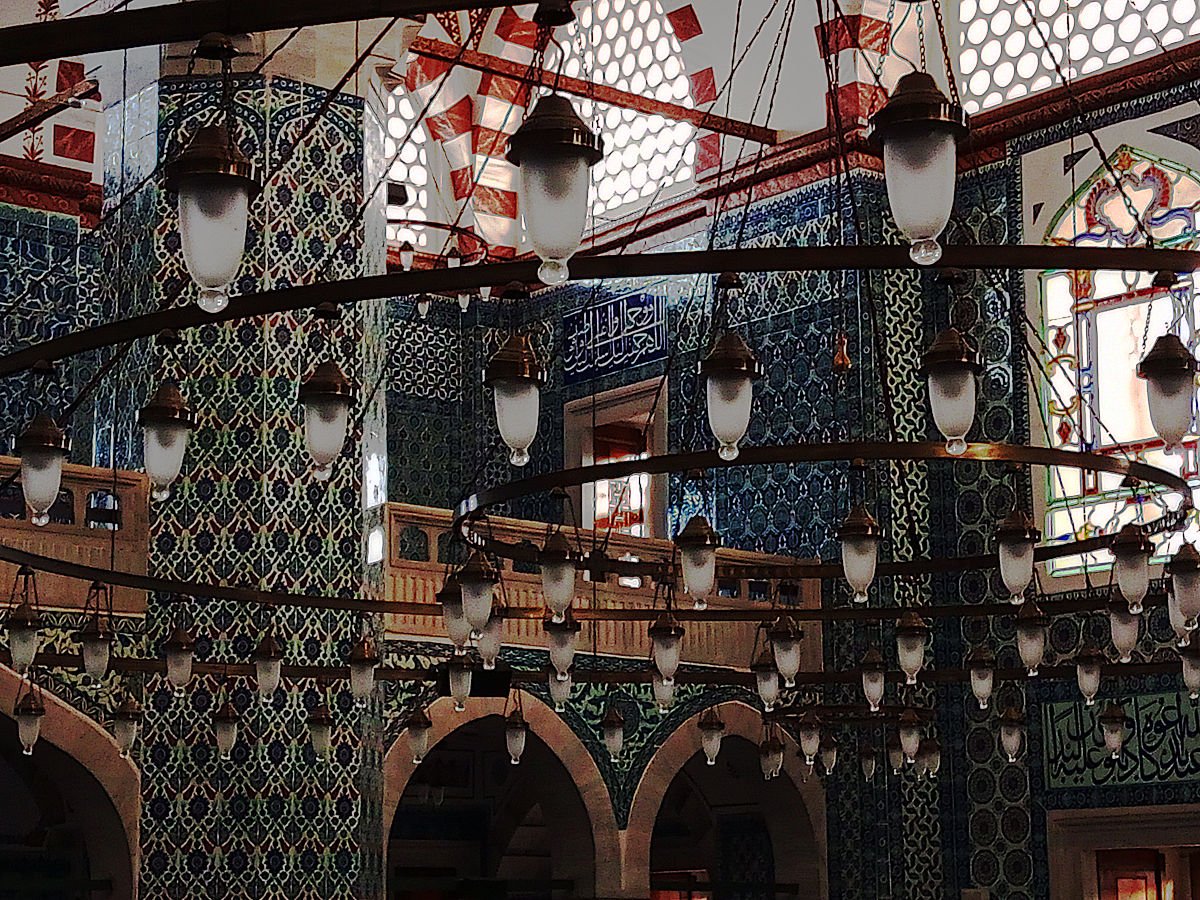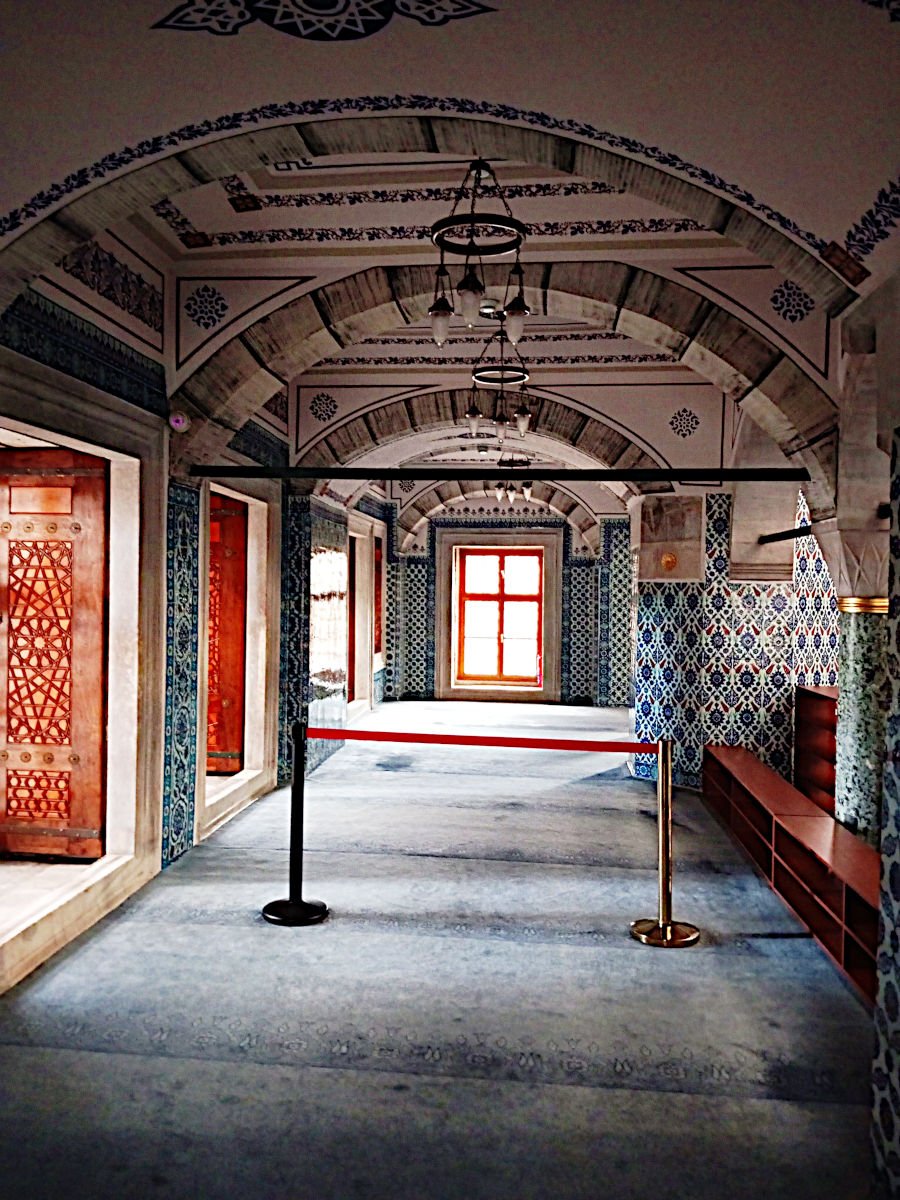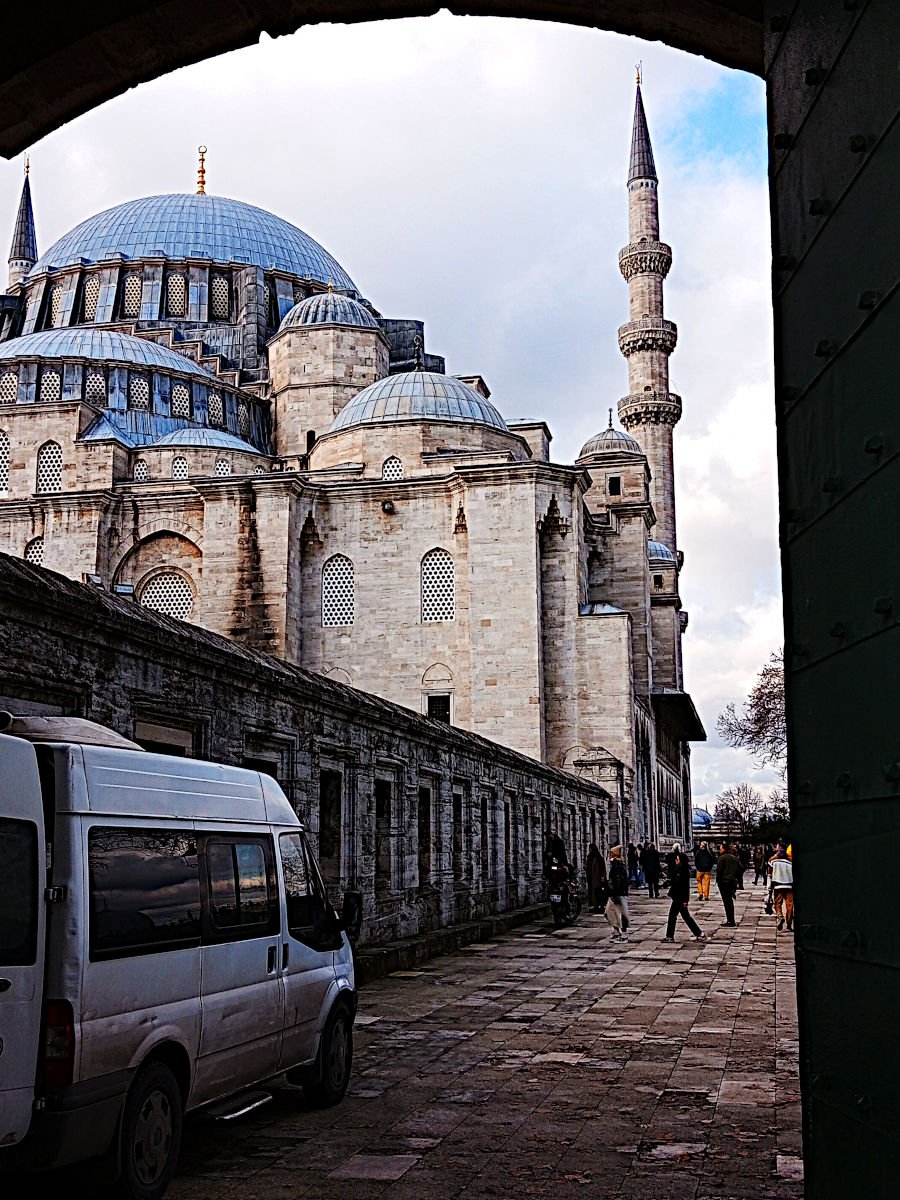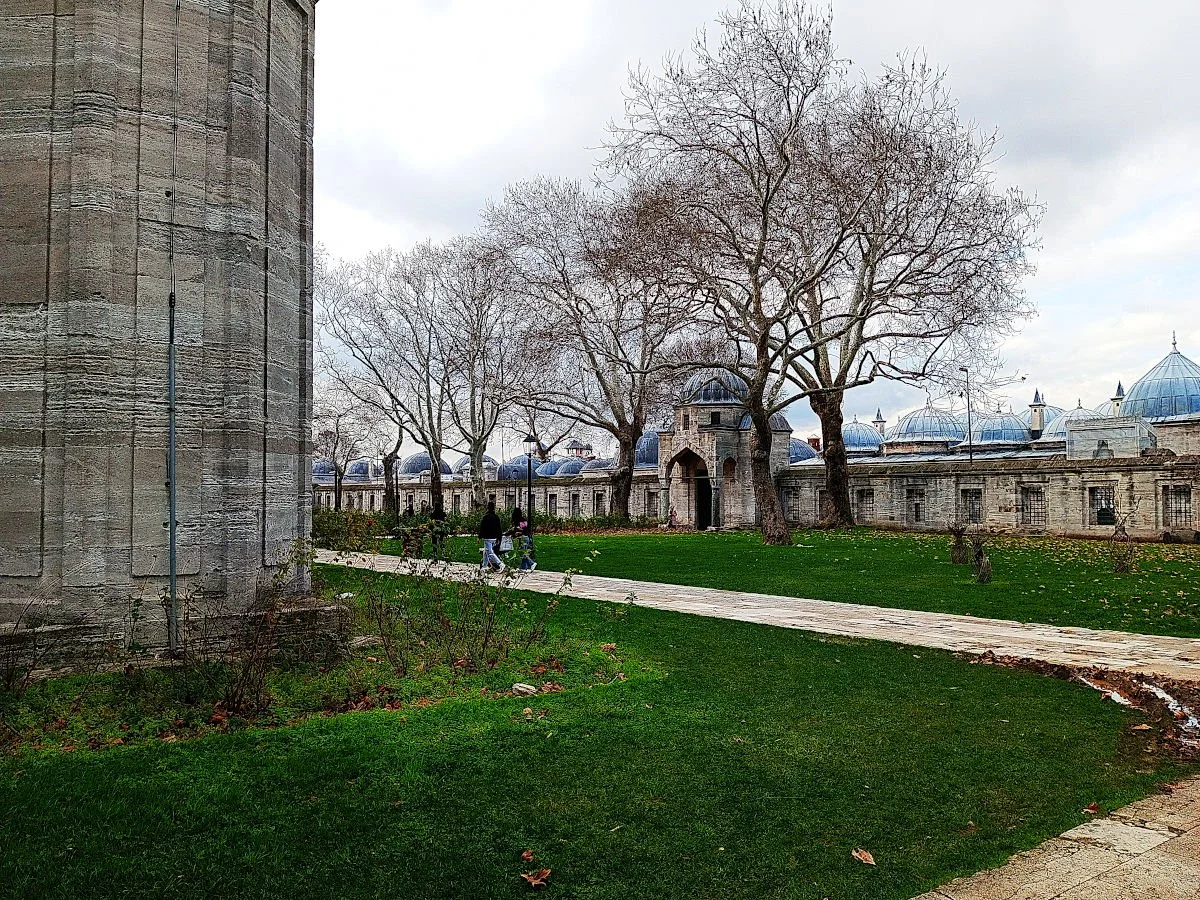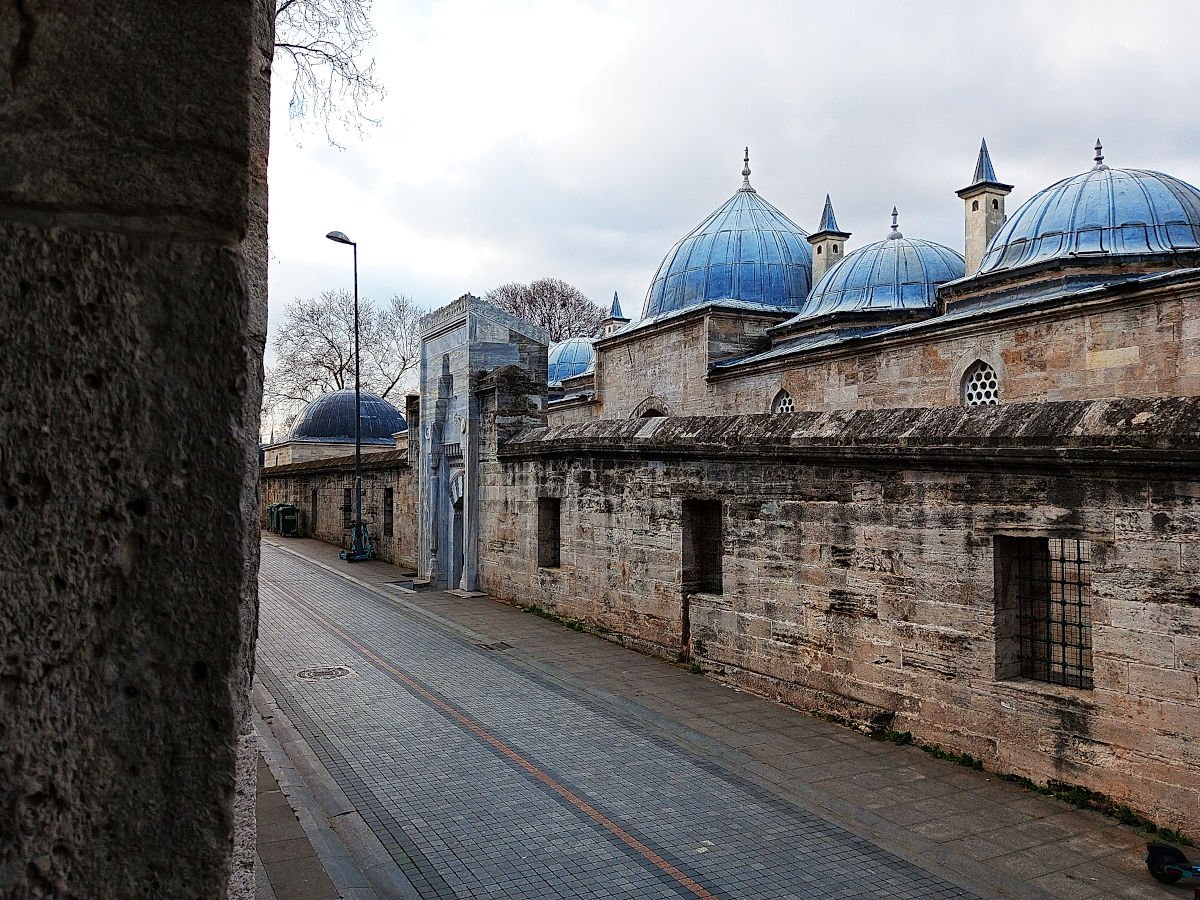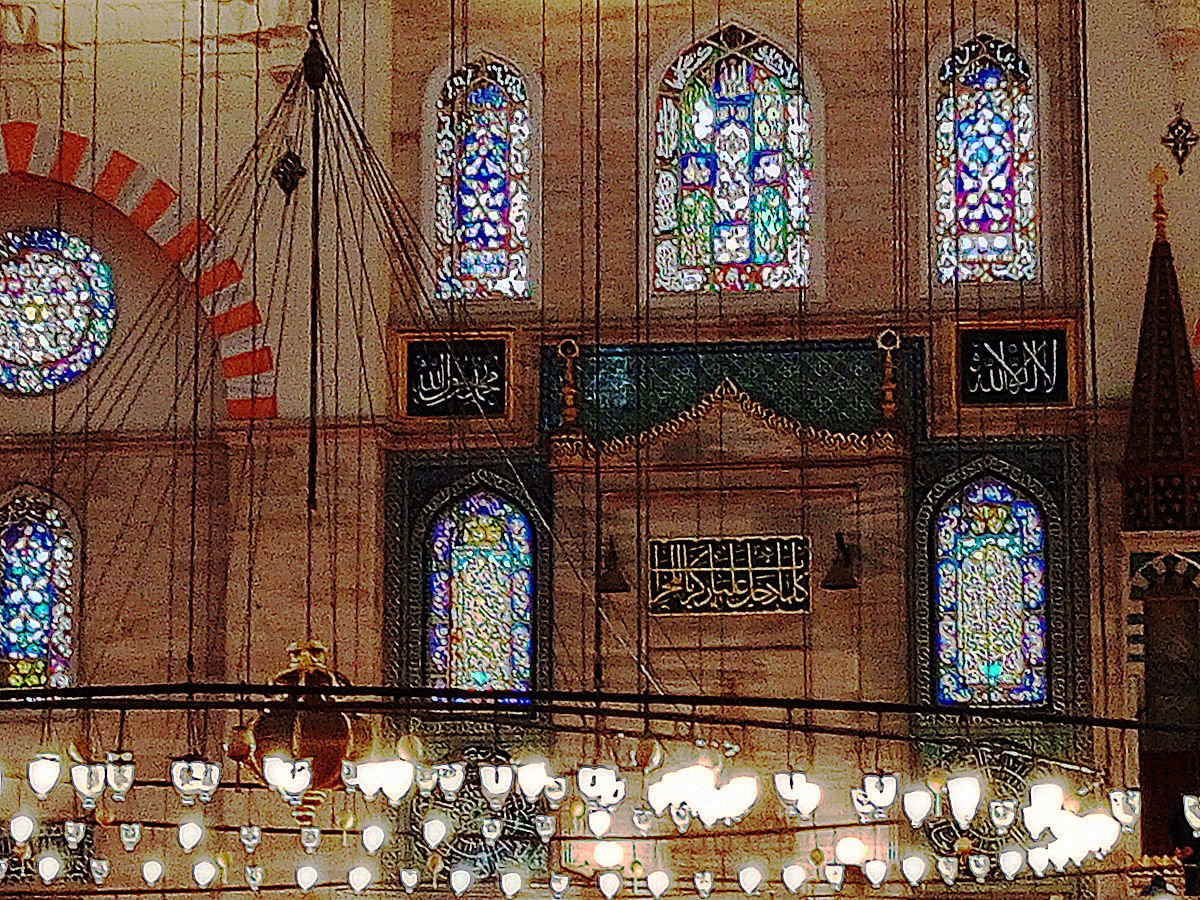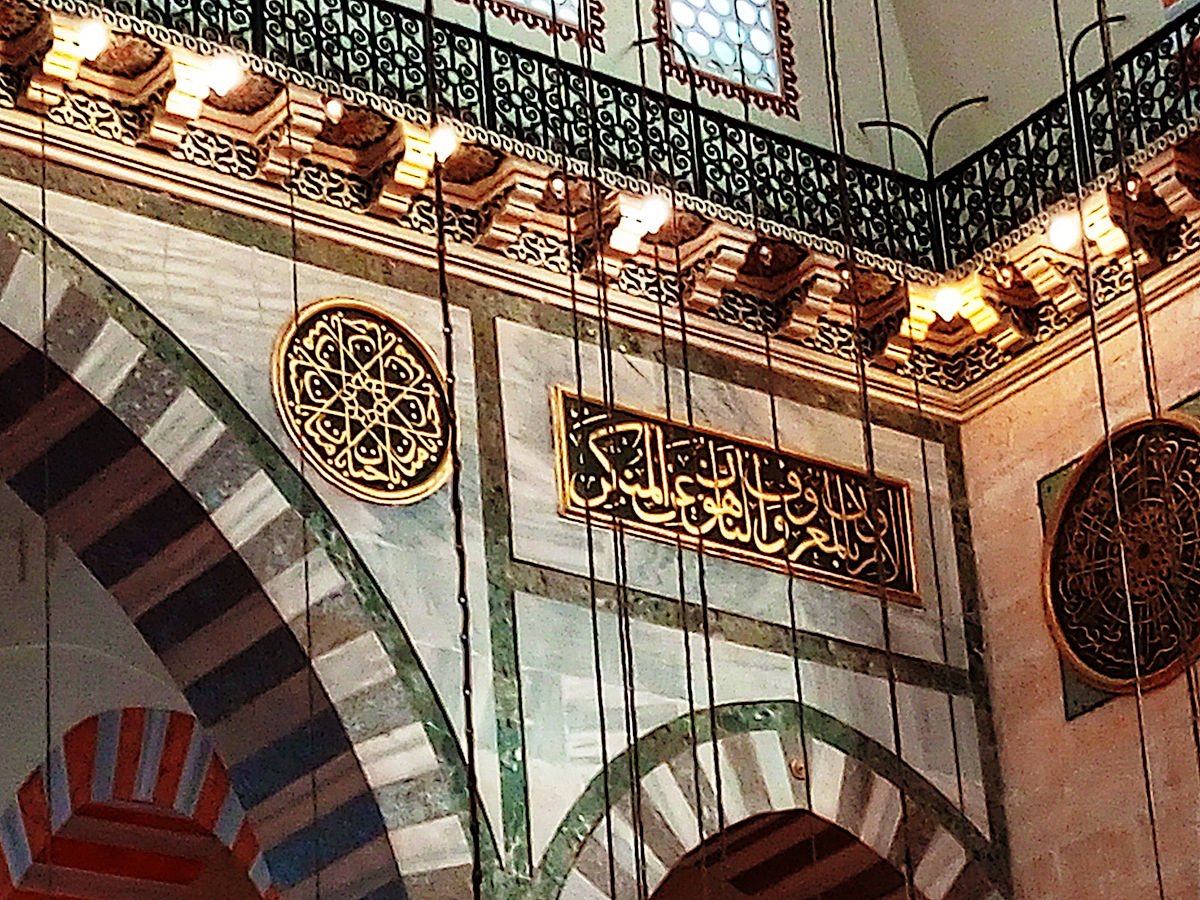Istanbul is full of architectural wonders. The guidebooks will rave about a few of them: the Topkapi palace (pronounced ‘tope-KOP-uh’), the Blue Mosque, Hagia Sophia (pronounced Iya SoFEya), but on any walking exploration of Istanbul you will be likely to stumble across some stunning ancient or medieval wonder, be it a ruins or a structure that is actively used.
There are numerous Byzantine-era churches scattered around the city. Some of my favorites are:
1. the Kariye Camii (Camii: mosque, pronounced JOM-ee), originally the Chora Church, built in C4;
2. the Kalenderhane Camii, originally the Church of Theotokos Kyriotissa, late C12;
3. the Zeyrek Camii, originally the Pantokrator Monastery, C12; and
4. the Küçük Ayasofya Camii (pronounced KU-chuk Aya SoFEya), the “Little Hagia Sophia,” originally the Church of Saints Sergius and Bacchus, C6.
As for astonishing examples of mosque architecture, well, the list is vast. A few of my favorites are the Yeni (YEN-nee), the Fatih (FUH-tee), the Nuruosmaniye (NOR-osMON-eyeh), and the Beyazit (Bay-UH-zit, or BAY-uh-ZEET, I’ve heard both).
But my two favorite mosques are featured below: the Süleymaniye (Sulee-MON-eyuh) and the Rüstem Paşa (RUStem POSHuh). They are both in the Fatih district along the Golden Horn. If you go to a mapping site and find Istanbul’s Spice Bazaar (the Mısır Çarşısı, aka the Egyptian Bazaar), you will quickly locate Rüstem Paşa, and from there it’s a 10 minute walk (uphill) to the Süleymaniye, which crowns a hill overlooking the Golden Horn and the Bosporus.
But before I take you to those two mosques, I thought we should first explore a lesser known district in Istanbul, Eyup (Ay-YUPE) sometimes called the City of the Dead. It’s almost at the upper end of the Golden Horn, and is where many of the sultans and high ranking Ottoman officials are buried. It is a district full of mosques, tombs, and graveyards.
I hope you find this a fascinating little exploration.
Journey on!
